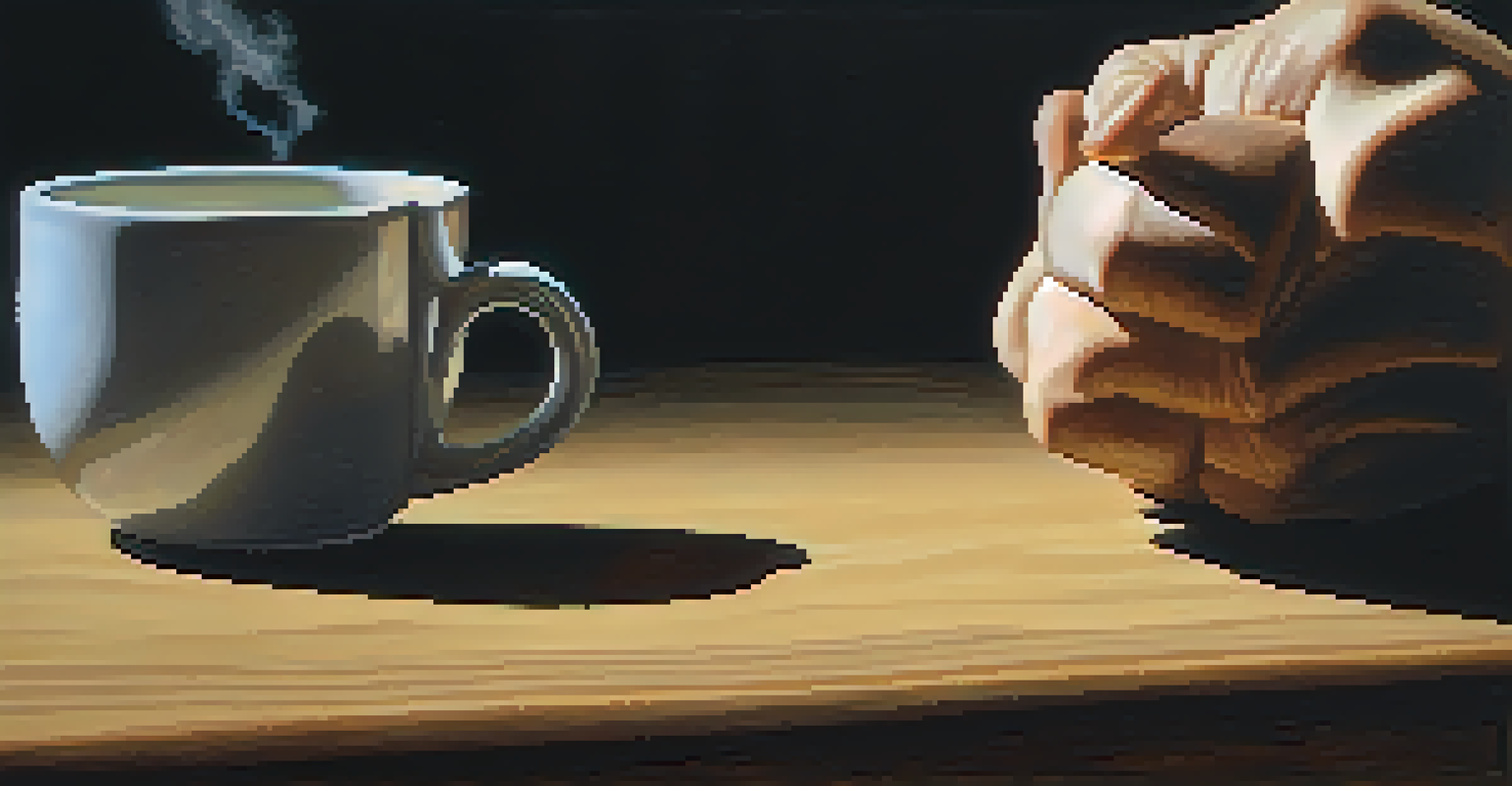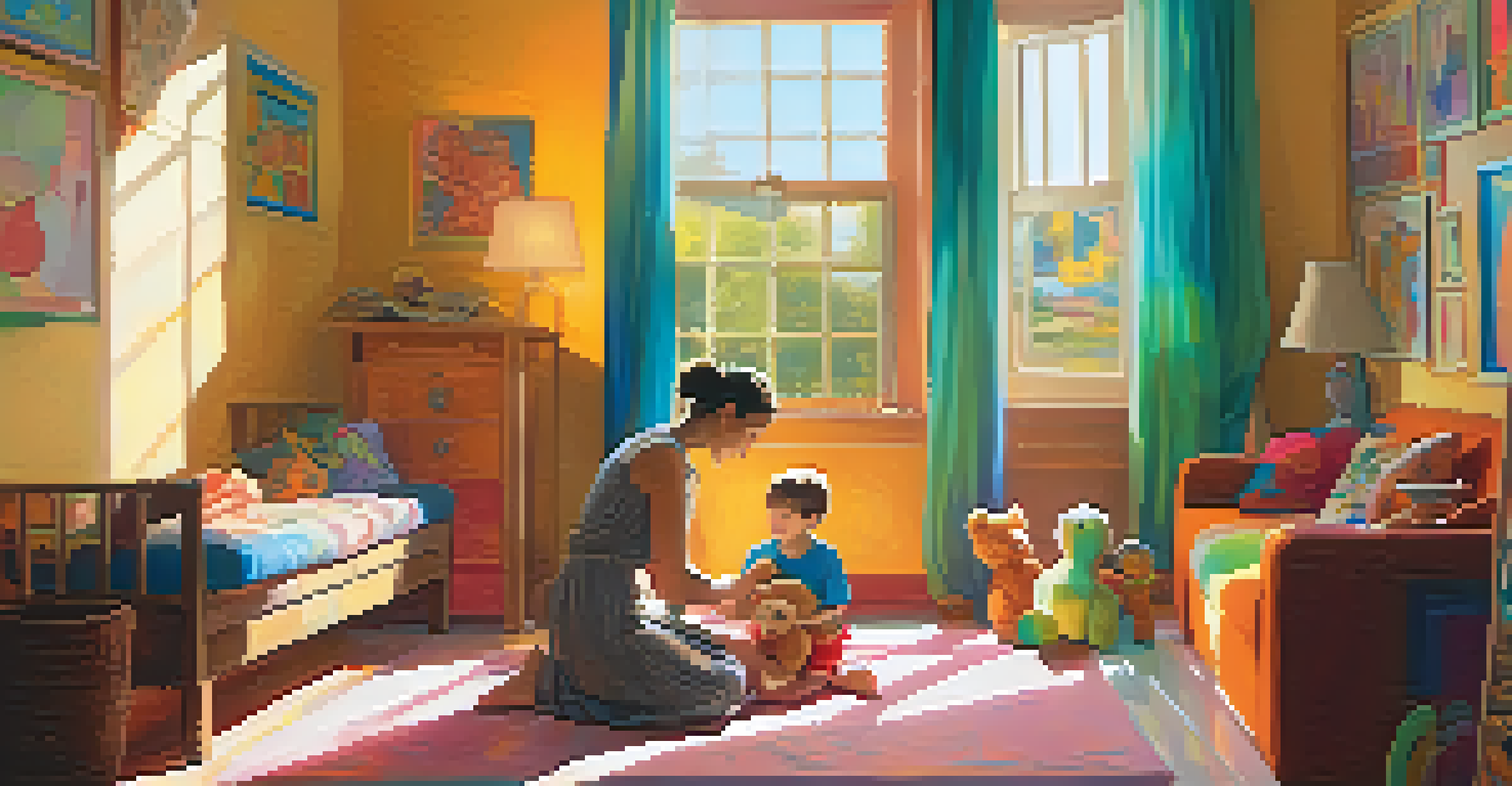Visual Storytelling: Show, Don't Tell in Screenwriting

Understanding Visual Storytelling in Screenwriting
Visual storytelling is the craft of conveying a narrative through imagery rather than dialogue. In screenwriting, this means using visuals to express emotions, motives, and plot points without explicitly stating them. Think of it as painting a picture with words, where every scene is a brushstroke that brings your story to life.
The best stories are the ones that are visual and emotional, not just verbal.
For instance, instead of saying a character is sad, you might show them sitting alone on a park bench, rain cascading down. This imagery allows the audience to feel the character's loneliness without needing to hear it expressed verbally. By prioritizing visuals, screenwriters can create a more immersive experience for viewers.
Ultimately, mastering visual storytelling involves recognizing the power of ‘showing’ over ‘telling.’ It invites the audience to engage more deeply, allowing them to interpret and feel the story on a personal level, which can lead to a more memorable viewing experience.
The Importance of 'Show, Don't Tell' Principle
The principle of 'show, don't tell' is a foundational concept in screenwriting and storytelling at large. It encourages writers to reveal character traits and story arcs through actions and visuals rather than exposition. This approach not only makes your script tighter but also enhances emotional engagement.

For example, consider a scene where a character is angry. Instead of having them yell or say they're furious, you might depict them clenching their fists, pacing the room, or throwing objects. Such actions create an impactful visual representation of their emotions, allowing the audience to feel that anger without it being explicitly spelled out.
Visuals Convey Emotion and Story
Visual storytelling emphasizes showing rather than telling, allowing audiences to feel emotions through imagery.
In doing so, the audience becomes a part of the narrative journey, piecing together the character's feelings and motivations. This engagement fosters a stronger connection to the story, making it more relatable and authentic.
Crafting Compelling Visuals in Your Screenplay
Creating compelling visuals starts with a clear vision of your story's emotional landscape. Each scene should be designed to evoke a specific feeling or reaction, guiding viewers through the narrative. Think about what visuals best convey the essence of your characters and plot.
Good writing is supposed to evoke sensation in the reader—not the fact that it is raining, but the feeling of being rained upon.
For instance, if your scene is meant to depict joy, consider bright colors, wide shots of laughter, and playful movements. Contrarily, if you're illustrating despair, you might choose dim lighting, close-ups of tearful faces, and slow, deliberate actions. These visual cues can significantly enhance the viewers’ emotional experience.
By strategically crafting these visuals, you not only convey your story more effectively but also maintain the audience’s interest. They become invested in what they see, which can lead to a more impactful and memorable film.
Using Symbolism to Enhance Visual Storytelling
Symbolism is a powerful tool in visual storytelling that adds depth to your narrative. By incorporating symbols, you can convey complex ideas and themes without lengthy explanations. This subtlety enriches the storytelling experience, making it more engaging for the audience.
For example, a character carrying an umbrella can symbolize their desire for protection or a fear of vulnerability. This simple visual can suggest deeper emotions or conflicts without a single word being spoken. It invites the audience to look closer and draw their own interpretations.
Symbolism Adds Depth to Narrative
Incorporating symbols can convey complex themes and emotions subtly, enriching the storytelling experience.
Using symbolism effectively requires thoughtfulness and precision. The symbols should resonate with the story's themes, enhancing rather than confusing the narrative. When done right, they can transform a straightforward story into a rich tapestry of meaning.
Creating Subtext Through Visuals
Subtext is the underlying meaning that exists beneath the surface of your dialogue and action. In visual storytelling, subtext is often conveyed through what characters do or how they interact with their environment. It allows for a layered approach to storytelling that can engage audiences on multiple levels.
For instance, a character who avoids eye contact while speaking could imply insecurity or dishonesty, even if they’re not directly stating it. This visual cue adds complexity to their character and invites the audience to read between the lines, fostering a richer viewing experience.
By weaving subtext into your visuals, you encourage viewers to think critically about the narrative. This engagement can lead to discussions and interpretations long after the credits roll, making your story resonate even further.
The Role of Cinematic Techniques in Visual Storytelling
Cinematic techniques, such as framing, lighting, and camera angles, play a crucial role in visual storytelling. These elements shape how a scene is perceived and can significantly influence the audience's emotions. Understanding how to manipulate these techniques can elevate your screenplay from basic to brilliant.
For example, a high-angle shot can make a character appear small and vulnerable, while a low-angle shot can convey strength and dominance. Similarly, lighting can create mood—harsh, bright lights can evoke tension, while soft lighting can suggest warmth or intimacy. This careful orchestration of visuals helps to craft the overall tone of your film.
Cinematic Techniques Shape Perception
Understanding cinematic techniques like framing and lighting enhances how a scene is perceived and influences viewer emotions.
When screenwriters collaborate with directors and cinematographers, the potential for powerful visual storytelling multiplies. By combining strong writing with effective cinematic techniques, the story can unfold in a way that captivates and resonates with the audience.
Bringing It All Together: Practice and Application
To master visual storytelling, practice is essential. Analyze your favorite films and scripts, paying attention to how they utilize visuals to convey emotions and narratives. Take note of the techniques that resonate with you and think about how you can apply them to your own writing.
Consider writing a scene where you focus solely on visuals—no dialogue, just actions and imagery. This exercise will challenge you to think creatively about how to convey your story through what the audience sees. It's a great way to hone your skills and understand the power of visuals.

Remember, visual storytelling is an art form that grows with experience. Keep experimenting, learning, and refining your approach, and you'll find that the more you practice, the more instinctive and impactful your storytelling will become.